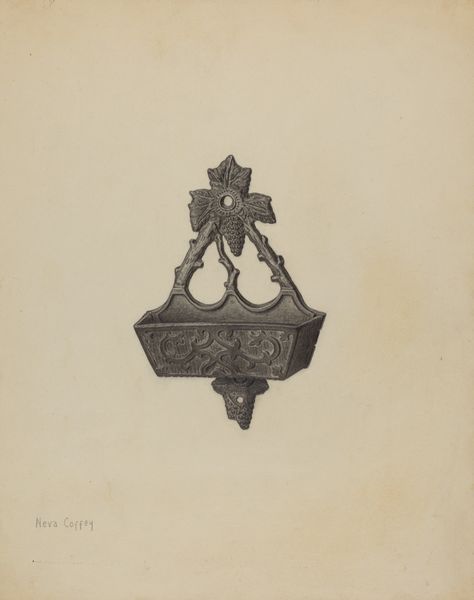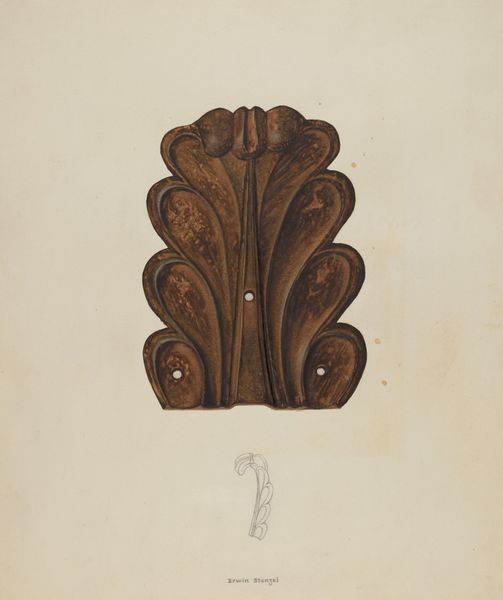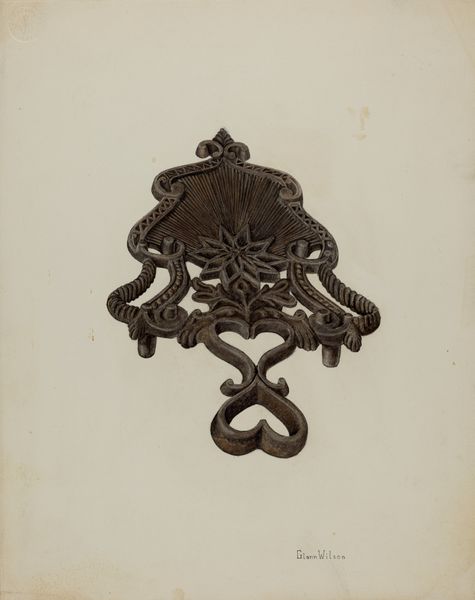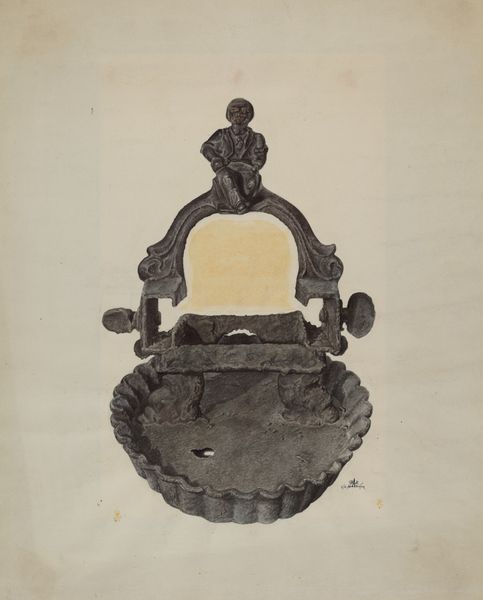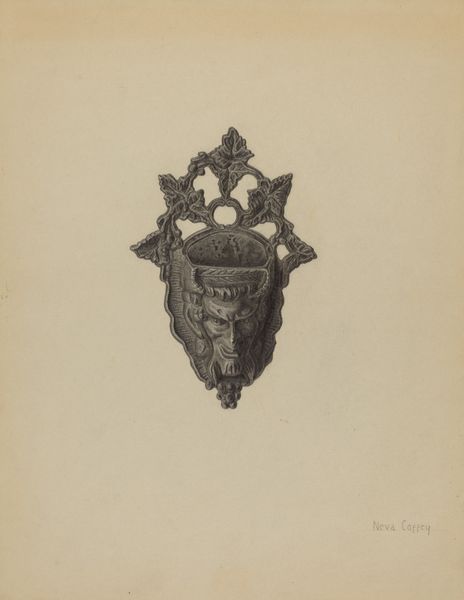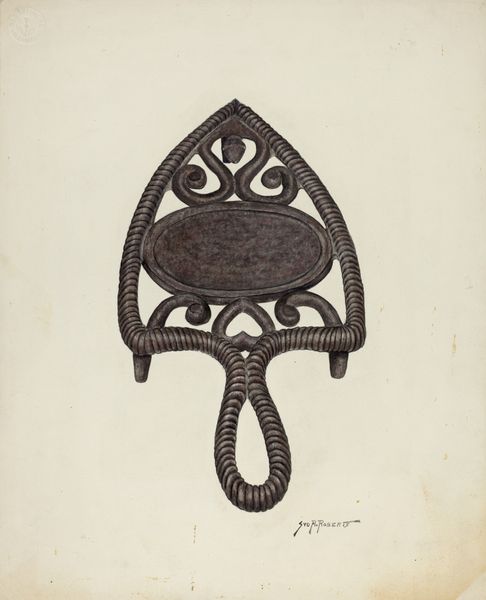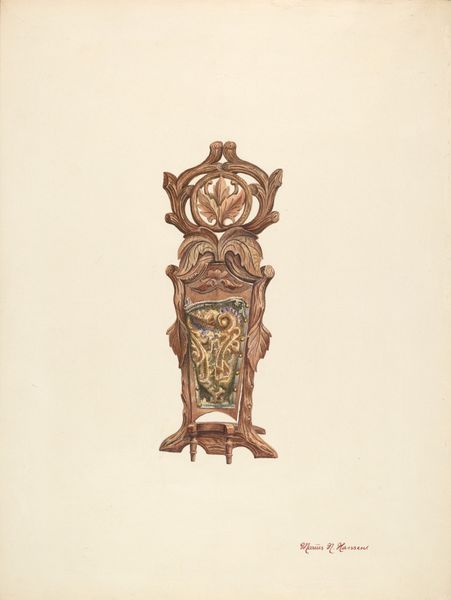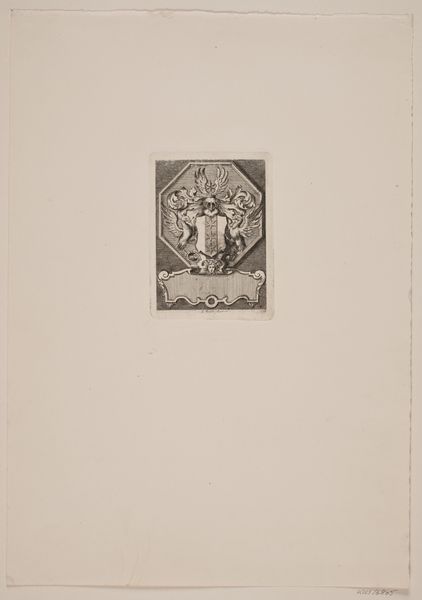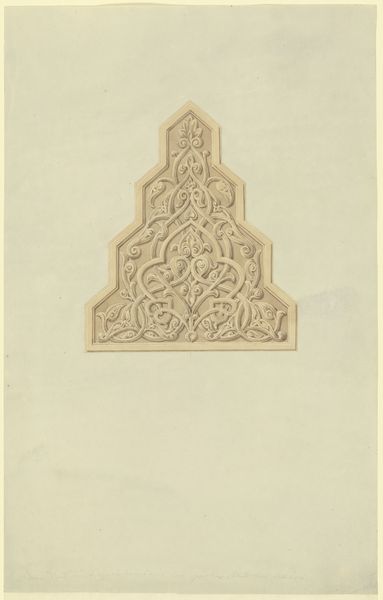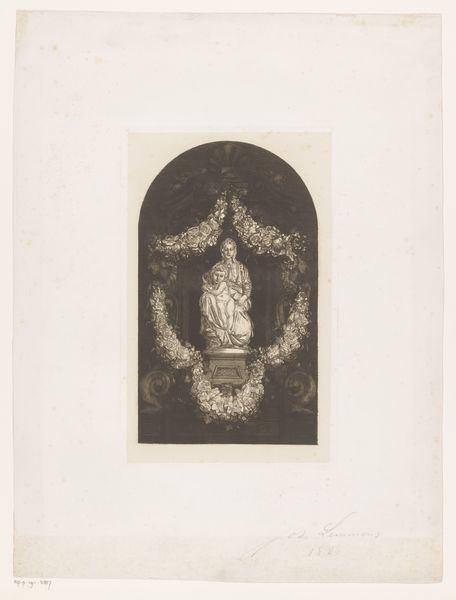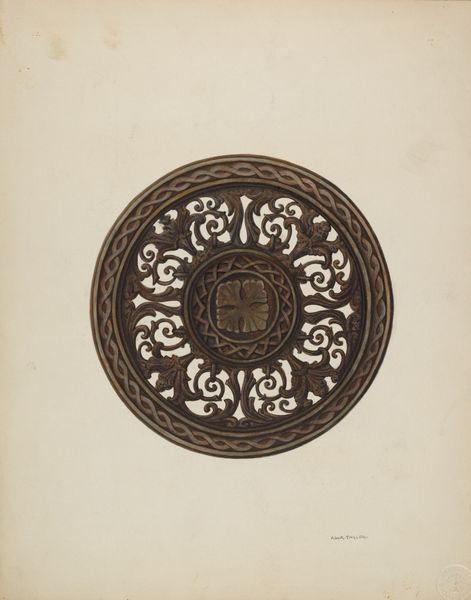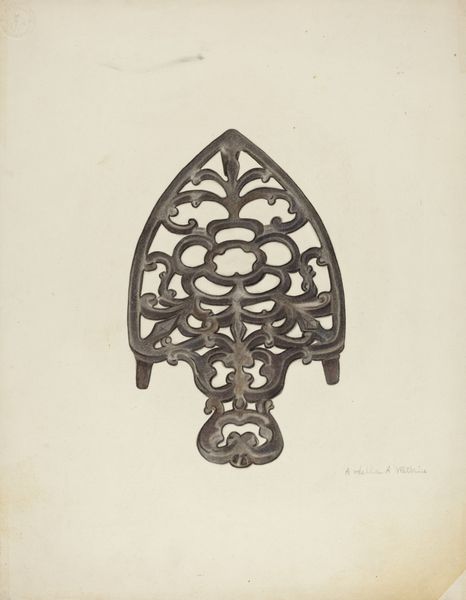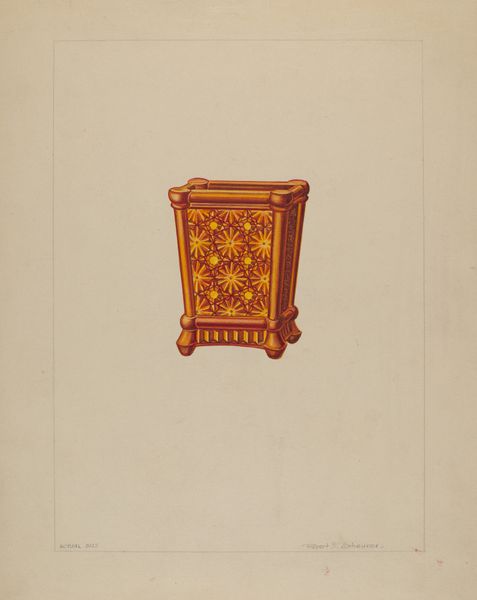
drawing, paper, pencil
#
drawing
#
toned paper
#
paper
#
pencil drawing
#
pencil
Dimensions: overall: 34.3 x 24.5 cm (13 1/2 x 9 5/8 in.) Original IAD Object: 15"x9"
Copyright: National Gallery of Art: CC0 1.0
Curator: Welcome. Today, we are looking at Wilford H. Shurtliff's drawing, "Comb Case," rendered in 1937 using pencil on paper. Editor: My initial reaction? It’s surprisingly austere for something intended to hold combs. The intricate silhouette feels almost... gothic. Curator: Interesting. We can see a renewed interest during this time in the aesthetic of colonial crafts—a conscious revisiting of early American artistry but tempered by a modern, simplified design sense. It’s not merely decorative; it's making a statement about American values during a tumultuous economic period. Editor: Absolutely, I think you are right to point out those values. But maybe it speaks to the artist's ambivalence. Look at how heavily shaded it is! Even the toned paper suggests a darkening, a weight...it feels almost like a memorial, not just an image of an everyday object. Curator: The use of pencil allows for detailed expression within what would have been considered an 'appropriate' medium. Think about it: paper and pencil enabled mass-produced images suitable for educational settings, like classrooms focused on craftsmanship. Reproducibility was crucial. It put the decorative within the reach of everyday people. Editor: True! Affordability and education, that is so clever. I'm stuck with the object and all its shadows! This rendering invites us to linger, reflect on its design, yes, but it also evokes a quiet contemplation, doesn't it? Even on something mundane as grooming! I find myself strangely moved by the quiet artistry of this humble object. Curator: Well, by framing a common, crafted item, Shurtliff perhaps elevates the artistry and industry involved in creation. This perspective creates an immediate connection between then and now as an active valuing, rather than passive preservation. Editor: Agreed, there is certainly that perspective too. Ultimately, what is preserved and why is up to each of us to consider when we meet an object in an image, or an image in an object.
Comments
No comments
Be the first to comment and join the conversation on the ultimate creative platform.

